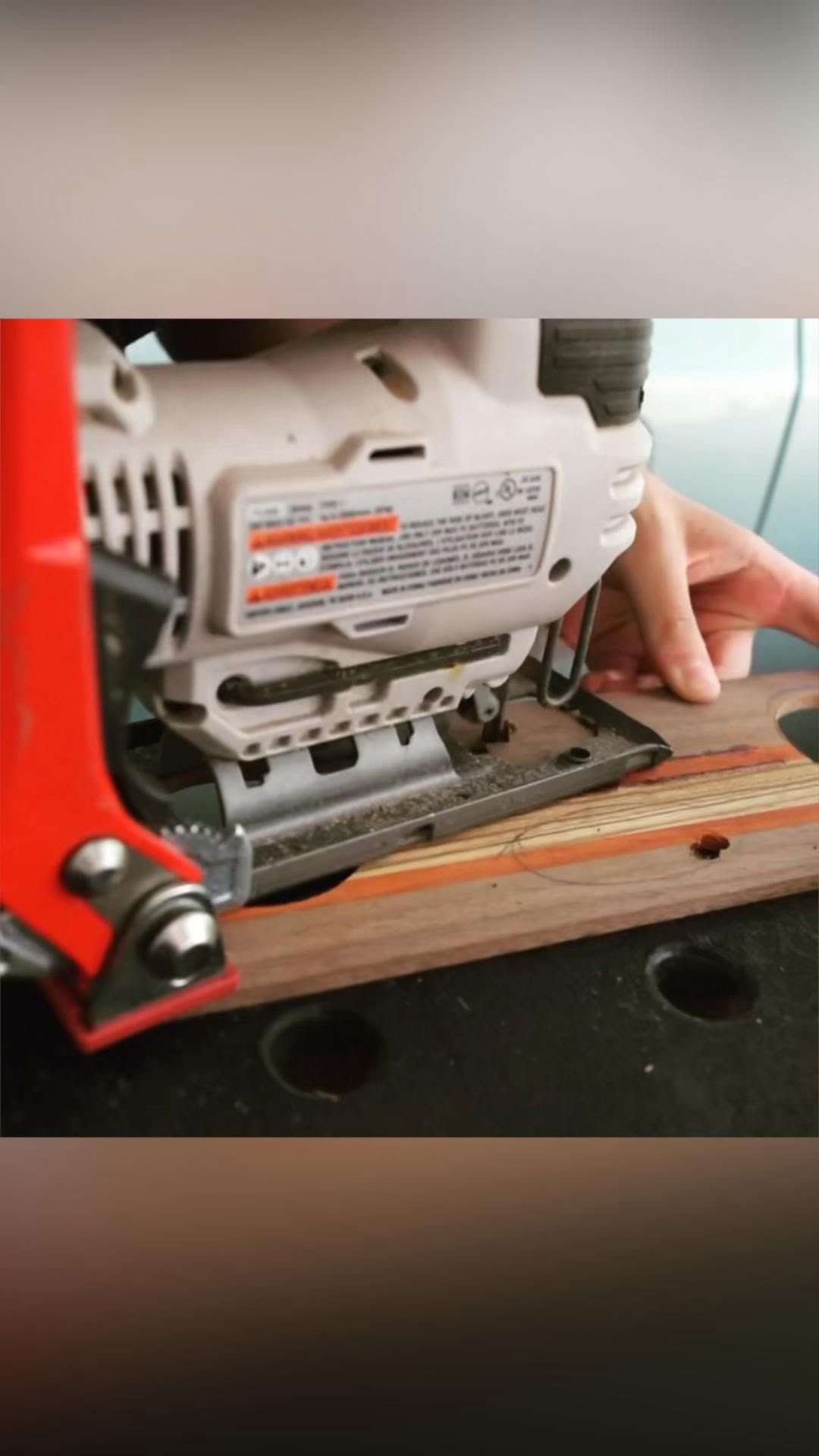Have you ever found yourself wondering, “should I start dealing in antique woodworking tools“? Antique woodworking tools have a timeless appeal that continues to captivate both collectors and enthusiasts alike.
In this article, we will delve into the world of antique woodworking tools, exploring their history, value, market demand, and the pros and cons of dealing in these unique and historical instruments. Whether you are a seasoned collector or just starting out in the world of antique tools, this comprehensive guide will provide valuable insights into the industry.
The craftsmanship and artistry of antique woodworking tools have made them highly sought after by hobbyists, professionals, and collectors. The allure of these tools lies not only in their practical use but also in their historical significance and aesthetic appeal. From hand-crafted planes to finely detailed saws, each tool tells a story of craftsmanship and innovation from an era gone by.
In this article, we will examine the history and value of antique woodworking tools, shedding light on the factors that contribute to their enduring appeal. Additionally, we will explore the market for antique woodworking tools to determine if there is a demand for these items in today’s marketplace. Whether you are considering starting a business or simply adding to your collection, understanding the market is essential for success in dealing with antique woodworking tools.
The History and Value of Antique Woodworking Tools
Antique woodworking tools have a rich history and hold significant value for collectors and enthusiasts. These tools provide insight into the craftsmanship and ingenuity of past woodworkers, making them highly sought after in the antique market. Understanding the history and value of these tools is crucial for anyone considering entering the business of dealing in antique woodworking tools.
The history of antique woodworking tools dates back to ancient civilizations, where early woodworkers utilized primitive tools to create functional and artistic pieces. Over time, advancements in technology led to the development of more sophisticated woodworking tools, each with its own unique design and purpose. As a result, antique woodworking tools showcase the evolution of woodworking techniques and are prized for their historical significance.
In terms of value, antique woodworking tools can range from a few dollars to thousands, depending on factors such as rarity, condition, age, and manufacturer. Collectors often seek out specific brands or rare pieces that add value to their collection. It’s essential for anyone interested in dealing in antique woodworking tools to have a thorough understanding of these factors when assessing the value of potential inventory items.
- Early woodworkers used primitive hand tools such as axes, chisels, and saws
- The Industrial Revolution brought about mass production of woodworking machinery
- Collectors may pay top dollar for rare or unique pieces by well-known manufacturers like Stanley or Disston
The Market for Antique Woodworking Tools
One reason for the demand in antique woodworking tools is the superior quality and craftsmanship of these items compared to modern tools. Many older tools were handmade by skilled craftsmen using high-quality materials, making them more durable and reliable than their modern counterparts. Additionally, the historical value and nostalgia associated with these tools adds to their appeal, making them highly sought after by enthusiasts.
Another factor driving the demand for antique woodworking tools is the trend towards sustainable and eco-friendly practices. Many woodworkers are choosing to use vintage hand tools as a more environmentally conscious option compared to mass-produced power tools. This has led to an increase in the demand for antique woodworking tools, especially those that can be refurbished and used effectively in a modern workshop.
Furthermore, the rise of online marketplaces and auction sites has made it easier for collectors and sellers to connect, increasing the visibility and accessibility of antique woodworking tools. This has expanded the market beyond local collectors and allowed for a global network of buyers and sellers interested in antique woodworking tools.
| Reasons for Demand | Impact on Market |
|---|---|
| Superior quality and craftsmanship | Increased visibility through online marketplaces |
| Sustainable and eco-friendly trend | Global network of buyers & sellers |
Pros and Cons of Dealing in Antique Woodworking Tools
When considering whether to start dealing in antique woodworking tools, it’s important to weigh the pros and cons before diving into this niche market. One of the main advantages of dealing in antique woodworking tools is the potential for high profits.
Collectors and hobbyists are always on the lookout for rare and unique pieces, which can drive prices up. Additionally, there is a sense of satisfaction in preserving historical tools and passing them on to new owners who will appreciate their craftsmanship.
On the other hand, one of the downsides of dealing in antique woodworking tools is the uncertainty of the market. Unlike more mainstream collectibles, such as coins or stamps, the demand for antique woodworking tools can fluctuate greatly. It may take longer to find buyers, and there’s no guarantee that a tool will sell for a high price. Additionally, authenticating and valuing these items can be challenging, requiring specialized knowledge that not everyone possesses.
Another consideration when deciding whether to start dealing in antique woodworking tools is the effort required to source and restore these items. Finding quality pieces can be time-consuming, as they are not as readily available as newer tools. Restoring them to a sellable condition can also be labor-intensive and may require additional investment in materials and equipment.
With these pros and cons in mind, those interested in entering this niche market should carefully consider their passion for woodworking history and their knowledge of antique tools before diving into dealing with them.
| Advantages | Disadvantages |
|---|---|
| Potential for high profits | Uncertainty of the market |
| Sense of satisfaction in preserving historical tools | Finding quality pieces can be time-consuming |
| Passing on historical tools to new owners who will appreciate their craftsmanship | Authenticating and valuing items requires specialized knowledge |
Where to Source Antique Woodworking Tools
When considering starting to deal in antique woodworking tools, one of the most important aspects to consider is where to source these valuable items. Finding a reliable and reputable source for antique woodworking tools can make or break your business venture, so it’s crucial to know where to look.
Antique Shops and Flea Markets
One of the most common places to find antique woodworking tools is at local antique shops and flea markets. These places often have an array of vintage tools that you can purchase at a reasonable price. Keep an eye out for unique pieces that may be overlooked by others, as these can often be the most valuable.
Online Auctions and Marketplaces
With the rise of online commerce, there are countless websites and marketplaces dedicated to buying and selling antique items, including woodworking tools. Websites like eBay, Etsy, and even specialized collector sites can be great places to find unique and rare tools from all over the world.
Estate Sales and Auctions
Estate sales and auctions are another excellent way to find antique woodworking tools. Many people overlook these events when looking for antiques, but they can be treasure troves of valuable items. Keep an eye on local listings and attend estate sales in your area regularly to increase your chances of finding high-quality vintage tools.
By exploring these different sources, you can build up a collection of antique woodworking tools that will appeal to collectors and enthusiasts alike. Should I start dealing in antique woodworking tools? With a reliable source for these valuable items, you can confidently answer yes.
How to Determine Authenticity and Value
When it comes to dealing in antique woodworking tools, determining their authenticity and value is crucial for both sellers and buyers. This section will explore some key factors to consider when evaluating the authenticity and value of antique woodworking tools.
Identifying Authenticity
One of the first steps in determining the authenticity of an antique woodworking tool is to carefully examine its physical characteristics. This includes looking for signs of wear and tear that are consistent with its age, as well as any identifying marks or labels that may indicate its origin and maker. Furthermore, seeking the expertise of appraisers or individuals who specialize in antique woodworking tools can provide valuable insight into the authenticity of a particular item.
Evaluating Value
Assessing the value of antique woodworking tools involves considering a range of factors, such as rarity, condition, historical significance, and current market demand. Additionally, researching recent sales data for comparable items can provide a better understanding of their potential value in today’s market. It’s important to keep in mind that the value of antique woodworking tools can fluctuate based on various economic conditions and trends within the collecting community.
Documentation and Provenance
Having proper documentation and provenance for antique woodworking tools can greatly impact their authenticity and value. This may include historical records, receipts, or other documents that trace the history and ownership of a particular item. Understanding the provenance of an antique woodworking tool not only adds to its credibility but also provides potential buyers with assurance regarding its legitimacy.
Marketing and Selling Antique Woodworking Tools
When it comes to marketing and selling antique woodworking tools, there are a few key considerations to keep in mind. Whether you’re just starting out or have been in the business for a while, reaching the right audience and effectively promoting your inventory is essential for success. Here are some strategies to help you effectively market and sell antique woodworking tools:
- Online Platforms: Utilize e-commerce platforms such as eBay, Etsy, or even your own website to reach a global audience of potential buyers.
- Social Media Marketing: Leverage social media platforms like Instagram and Facebook to showcase your antique woodworking tools, engage with potential customers, and build a community around your brand.
- Networking: Attend antique shows, flea markets, and woodworking events to connect with fellow enthusiasts, collectors, and potential buyers.
In addition to marketing, it’s important to consider the logistics of selling antique woodworking tools. This includes packaging items securely for shipment, providing accurate descriptions and photographs of each piece, and offering transparent information about their authenticity and value.
While dealing in antique woodworking tools can be a rewarding venture for enthusiasts and entrepreneurs alike, it’s important to approach it with careful consideration. The market for these items can be specialized, so building a strong online presence through effective marketing strategies should i start dealing in antique woodworking tools will play a crucial role in finding the right buyers for your inventory.
By tapping into various channels such as online platforms, social media marketing, and networking opportunities within the community, you can successfully market and sell these unique pieces to a dedicated audience.
Conclusion
In conclusion, the decision to start dealing in antique woodworking tools is a personal one that should not be taken lightly. The appeal of antique woodworking tools lies in their craftsmanship, history, and nostalgia for a bygone era. However, before delving into this niche market, potential dealers should carefully consider the history and value of these tools, the current demand in the market, and weigh the pros and cons of entering this industry.
As discussed earlier, the history and value of antique woodworking tools can vary greatly depending on factors such as rarity, craftsmanship, and historical significance. It is important for prospective dealers to take the time to thoroughly research and educate themselves on these aspects to ensure they are making informed decisions when sourcing and pricing these tools.
Furthermore, understanding how to determine authenticity and value is crucial in order to accurately assess each piece. Additionally, marketing and selling these items will require strategic planning and a good understanding of the target market. Overall, while dealing in antique woodworking tools can be a rewarding endeavor for those with a passion for history and craftsmanship, it is important to approach this venture with caution and careful consideration.
Frequently Asked Questions
Is There Money in Old Tools?
Yes, there is definitely money in old tools, especially if they are rare or in good condition. Collectors and antique enthusiasts are often willing to pay a premium for quality vintage tools that can still be used or displayed.
Do People Collect Vintage Tools?
Many people collect vintage tools as a hobby or as an investment. For some, it’s about the craftsmanship and history behind these tools, while others may appreciate their aesthetic value. Whether for personal use or display, vintage tools have a dedicated group of collectors.
Should Antique Tools Be Cleaned?
Whether or not antique tools should be cleaned is a subject of debate among collectors. Some believe that cleaning them can devalue the item by removing its patina and altering its original state.
Others argue that gentle cleaning to remove dirt and rust can help preserve the tool for future generations to enjoy. Ultimately, the decision on whether to clean antique tools comes down to personal preference and the specific condition of each item.

Hi everyone! I’m a woodworker and blogger, and this is my woodworking blog. In my blog, I share tips and tricks for woodworkers of all skill levels, as well as project ideas that you can try yourself.





